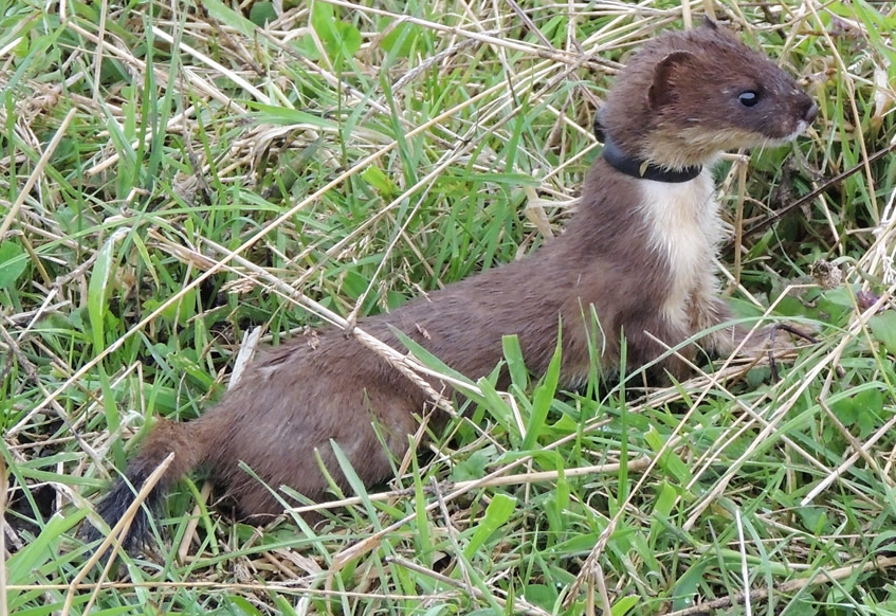GPS tracking collars on wild stoats in rural Taranaki may look cute, but they will provide vital information to help understand these notorious predators.

GPS tracking collar on a wild stoat in rural Taranaki
“These predators may look harmless, but stoats are skilled killers responsible for up to 60% of kiwi chick deaths, and this information will be vital to rid stoats from both rural Taranaki and Taranaki mounga.” Towards Predator-Free Taranaki Project Manager Toby Shanley says.
Recently this year, stoats in rural Taranaki were trapped, collared and released by Manaaki Whenua Landcare Research, which is collaborating with rural Taranaki landowners, Taranaki Regional Council and Taranaki Mounga Project as part of Towards Predator-Free Taranaki.
Ecologists from Manaaki Whenua Landcare Research captured and collared four stoats, weasels, and ferrets (mustelids) on farmland surrounding Egmont National Park. They will return in the coming weeks to catch more stoats and ferrets.
The GPS tracking collars will provide insight into stoat movements and behaviour on rural land; revealing how far they travel, their habitat, how their young disperse, and movements between the vast ringplain and Egmont National Park, where Taranaki Mounga Project, an environmental restoration programme, is operating.
“This research is critical to help us efficiently remove predators in Taranaki, as we work towards New Zealand’s 2050 predator-free goal. The support we’ve had from rural Taranaki landowners to enable this work has been fantastic, they’re right behind it,” Mr Shanley says.
Read more about the research: https://www.landcareresearch.co.nz/about/news/snippets/predator-free-taranaki(external link)